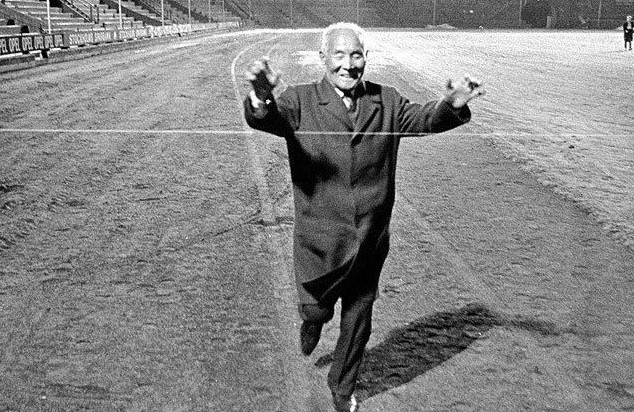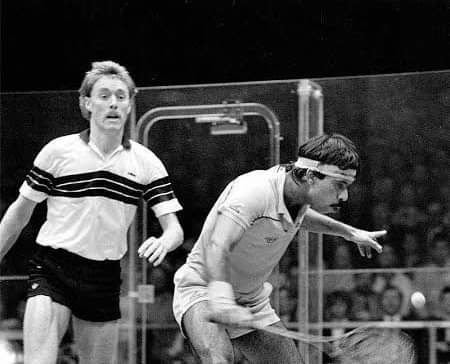It Took Him 54 Years To Finish A Marathon By Shizo Kanakuri. In terms of speed, he wasn’t a slow runner. As a matter of fact, he is reported to have set the world record in taking 2 hours, 32 minutes, and 45 seconds to complete a 40-km marathon run at a domestic event, qualifying him to represent Japan at the 1912 Stockholm Olympics. He was barely able to compete on race day and dropped out halfway.
As a result of his embarrassment, Shizo Kanakuri failed to show up. He wouldn’t be able to complete the race for decades. At the 1920 Antwerp Olympic Games, Shizo Kanakuri competes in the men’s marathon. Among the Japanese athletes, only Shizo Kanakuri competed at the Stockholm Olympics.
It was not a high priority to value sports in Japan at that time. Athletes were not reimbursed for their travel expenses by the government. A nationwide fundraiser was organized by Kanakuri’s college friends, who raised 1,500 yen. A 300 yen contribution was also made by Kanakuri’s oldest brother.
A ship trip and a train trip on the Trans-Siberian Railway took 18 days to reach Sweden. Kanakuri would sprint through stations whenever the train stopped, then hurriedly reboard. His stomach wasn’t agreeable to the local cuisine when he finally arrived in Sweden after the long journey. The coach of Kanakuri, who was confined to a bed because of tuberculosis, was unable to provide adequate training before the race to two athletes, including Kanakuri.

The heat was scorching on the day of the race. Only 34 of the 68 participants reached the finish line. During the Olympics, the first death was reported from a Portuguese runner who died the next day after being hospitalized. It was impossible for Kanakuri to run on the gravel course because he had only flimsy street shoes. A glass of water was offered to him by the residents of a house about half a mile into the race. A couch and raspberry juice were given to him, along with fruits and cinnamon rolls. In spite of his better judgment, Kanakuri lay down and fell asleep. It was the morning of the next day when he awoke.
It was a deeply disappointing and embarrassing experience for Kanakuri. “It’s the morning after my defeat,” he wrote in his journal the next day. As long as I live, my heart will ache with regret. I had never experienced anything like it before. The only thing I can do is wait for the day with fair weather after the rain so that I can clean up my shame. People should laugh if they want to laugh.
As a result, I showed how weak Japanese people are physically and how immature they are mental. Death is easy, but living is hard. I cannot fulfill this burden, but if it were up to me, I could fulfill it. My goal is to raise the prestige of our country and wipe off this shame by brushing up my marathon skills.”
The race officials did not receive any notification from Kanakuri, and he returned quietly to Japan. The Swedes made fun of his early departure, saying he had been running around the country for years looking for the finish line. Upon returning to his country, Kanakuri redoubled his efforts to defend his name and his nation’s honor.
In an effort to encourage other young people to take up long-distance running, he shared his long-distance running experiences with them. Additionally, he recruited and trained female athletes. As part of his teaching method, he also had blind kids grab onto a thread so that they could run. Japanese people still enjoy the multistage long-distance relay race called Ekiden that he invented.
As a member of Japan’s delegation to the Olympics, Kanakuri continued to compete. His marathon time was 2 hours, 48 minutes, and 45.4 seconds, and he placed 16th at the 1920 Summer Olympics held in Antwerp, Belgium. A second attempt at the 1924 Summer Olympics was unsuccessful for Kanakuri.
The story of his disappearance gained attention around the time of the 50th anniversary of the 1912 Games. Many people were surprised to learn that the missing Japanese runner was alive and well in his home country after learning of the folk legend. Kanakuri, now 76 years old, was invited to finish the race he began 54 years ago in Stockholm by Swedish officials in 1967. A ceremony was held, which was heavily covered by the Swedish media. Upon crossing the finish line, he was announced to have completed the race in 54 years 8 months 6 days 5 hours 32 minutes 20.3 seconds.
During the 1912 Stockholm Games, the stadium announcer announced: “This concludes all the events.” Kanakuri joked: “It was a long trip.” My journey included getting married, having six children, and having ten grandchildren.







